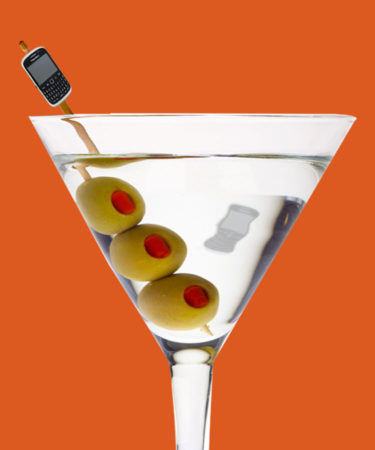
Long before “influencers” proliferated our Instagram feeds with products we can’t afford, brands were getting creative — and sometimes secretive — to reach their target audiences. The strategy, known as stealth marketing, aims to raise brand awareness, often before a product is launched, so that potential consumers are already primed for its arrival.
Also called undercover marketing, viral marketing, or, appropriately in the following case, “buzz” marketing, this deceptive tactic places the product in question, be it a new gadget or spirit, in destinations where its target market might just happen to hang out. Like bars, say, or even the sidewalk.
One brand that gained national attention for staging such a stunt was BlackBerry, which promoted its proto-smartphones to straight businessmen by paying attractive women to flirt with them in bars.
Don't Miss A Drop
Get the latest in beer, wine, and cocktail culture sent straight to your inbox.Selling What’s Hot
In 2010, BlackBerry hired attractive 20-something actresses to promote its new BlackBerry Pearl. The actresses would converse with men in bars and suggest exchanging phone numbers in their oh-so-convenient smartphones. “I definitely didn’t call anyone,” Julia Royter, a “pretty 26-year-old actress” from Brooklyn, told the Daily News in 2010.
Royter describes how she and “a bunch of hot girls” were hired to go to bars in Midtown Manhattan, the land of nine-to-fivers. They “would just walk into bars, whip out our BlackBerries and try to get guys to look at them by flirting,” Royter says. “We’d say, ‘Put your number in my phone and I’ll totally call you. We’ll go out on a date!’ But we just wanted them to try the BlackBerry.”
Starting a Buzz
Of course, BlackBerry wasn’t the first to attempt such a ruse. In the early 2000s, Sony Ericsson promoted its new camera phone via an undercover campaign internally referred to as “fake tourists.” It hired 60 actors in 10 cities to approach strangers in the street, phone in hand, and ask to have their pictures taken.
Back at the bar, in 2003, the owner of a sceney nightclub poured Turi Vodka drinks for young, hip party-goers. Unbeknownst to his patrons, the bar owner was hired by Bacardi to push the vodka that night. “This is the new way of doing it,” David Elias, founder of SoulKool, the social marketing agency that ran the campaign, told CBS. “[P]eople feeling like they’re marketed to all the time, that kind of message for this demographic doesn’t work … They want to know about it from a friend of theirs that’s in the know, that keeps up with the trends. And that way, it’s very subtle.”
In the 1990s, nearly 20 years before BlackBerrys hit the scene, marketing agency Kirshenbaum Bond & Partners ran a five-year-long campaign that also planted attractive young people in bars. In this case, their stunt was to order a very specific drink: a Hennessy Martini. It sounds unusual now — a Martini is made with gin or maybe vodka, not Cognac — but it worked. Hennessy comprises about 70 percent of the U.S. Cognac market.
Where traditional advertising persuades us, stealth marketing fools us. “[I]t’s the trickery part, I think, that makes [undercover marketing] different,” Malcolm Gladwell, journalist and author of “The Tipping Point,” said in a 2003 interview. Advertising may be deceptive, but it has boundaries. “A line is crossed, I think, when you go outside of those normal boundaries and start to deceive people,” Gladwell said.
Whether we like it or not, buzz marketing is happening right under our noses — and maybe even in our drinks.
